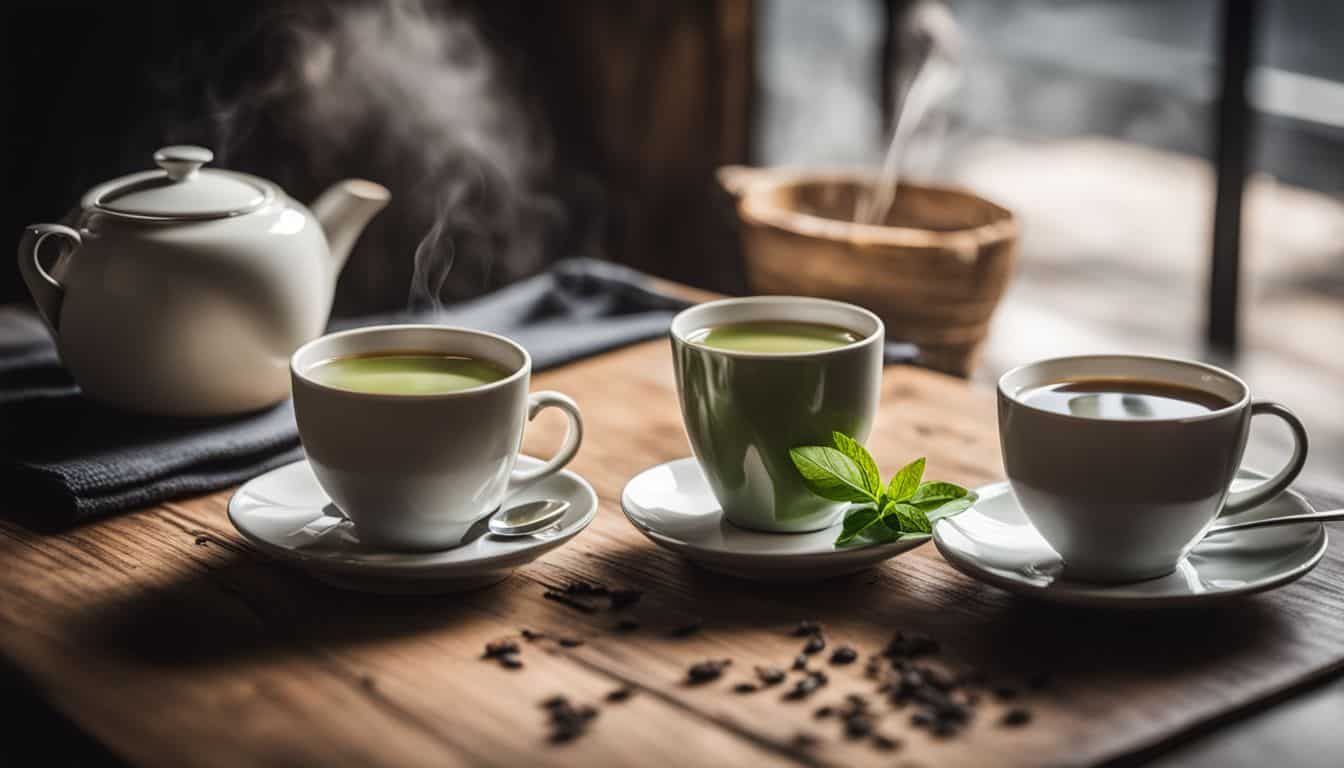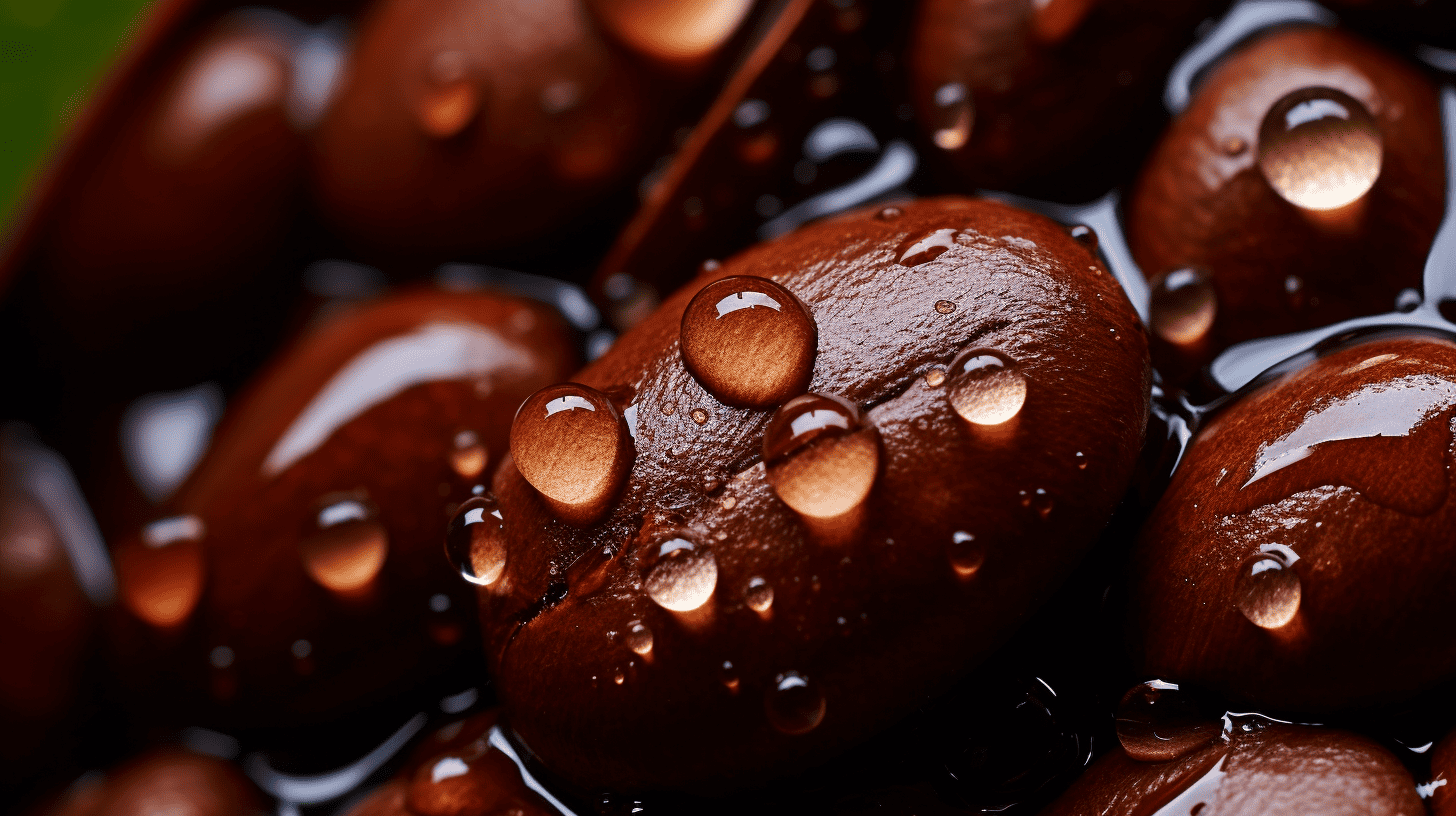Hey there! Are you a coffee lover like me? Well, as much as I enjoy sipping on my favorite cup of joe, I often find myself confused about the measurements and conversions when it comes to making coffee at home. Especially when figuring out how much is 5 coffee cups to oz.
But fear not; I’ve researched and am here to help! In this article, we’ll understand standard coffee cup sizes, how to convert coffee cups to ounces, and other standard measurements. So, whether you’re brewing for yourself or a crowd, you’ll have the knowledge to make the perfect cup of coffee every time. Let’s get started!
Understanding Standard Coffee Cup Sizes
Let’s explore the different sizes of standard coffee cups! Coffee cups come in various sizes, but there are four main types: demitasse, espresso, cappuccino, and latte. Demitasse cups are the smallest, holding only 2-3 ounces of liquid. On the other hand, a latte cup can hold up to 20 ounces of liquid. Understanding the different types of coffee cup sizes is important for measuring coffee accurately.
When it comes to brewing coffee, accuracy is key. Measuring the right amount of coffee grounds and water is crucial to achieving the perfect cup. Using the wrong size coffee cup can throw off your measurements and affect the taste of your coffee. That’s where understanding the different types of coffee cup sizes comes in handy.
How Many Ounces Are In Each Cup?
| Type of Cup/Mug | Ounces |
|---|---|
| Standard cup of coffee | 6-8 ounces |
| Standard U.S. measuring cup | 8 ounces |
| Large lattes and cappuccinos | 12 ounces (1 1/2 cups) |
| Travel mug | 16 ounces |
| Unbreakable camping coffee mug | 16 ounces |
| Small mug/latte cup/cappuccino cup/Greek coffee cup | 6 ounces |
The importance of measuring coffee accurately cannot be overstated. Using too much coffee can result in a bitter taste while using too little coffee can weaken your drink taste. Similarly, using too much water can make your coffee taste watery, while using too little can make it taste too strong. By understanding the different types of coffee cup sizes, you can ensure that you’re measuring your coffee accurately and brewing a perfect cup every time. So, how many ounces are in a coffee cup? Let’s find out in the next section.
How Many Ounces Are in a Coffee Cup
You’ll be pleasantly surprised at just how many ounces a single serving of your favorite morning beverage can hold. Measuring liquids can be tricky, especially when trying to figure out how much coffee you’re consuming. But fear not! A standard coffee cup can hold up to 8 fluid ounces of liquid, which is equivalent to 236.5 milliliters.
It’s important to note that coffee cup sizes can vary depending on the country and coffee brewing methods. For example, in Europe, a standard coffee cup only holds about 4-6 fluid ounces of liquid, while in the United States, coffee cups tend to be larger. Additionally, some coffee makers come with their own measuring cups or carafes, which may hold more or less than a standard coffee cup.
Understanding how many ounces are in a coffee cup is essential for accurately tracking caffeine intake. Whether you’re trying to limit your caffeine intake or want to know how much coffee you’re consuming, knowing the standard size of a coffee cup will help you make informed decisions about your favorite morning beverage.
In the next section, we’ll look at how to convert coffee cups to ounces so that you can easily measure your coffee intake. If you are curious about 3 cups of coffee and how that converts to ounces, go here.
Converting Coffee Cups to Ounces
Converting your morning brew from a standard coffee cup to ounces can be a game-changer, giving you a more precise understanding of your caffeine intake. Measuring coffee beans accurately is essential to get the perfect cup of coffee. Most coffee cups hold around 6 to 8 fluid ounces of liquid, but it’s always good to measure it out. Here are some steps to convert coffee cups to ounces.
- Step 1: Determine the capacity of your coffee cup. Most coffee cups hold around 8 ounces of liquid.
- Step 2: Multiply the number of coffee cups by 8 to get the number of ounces. For example, 5 coffee cups would be 40 ounces.
- Step 3: If you want to convert ml to oz, you can use a conversion factor of 1 ml = 0.034 oz. So, if you have 240 ml of coffee(240 is rounded up for ease), it would be equal to 8.16 oz.
- Step 4: Once you know the number of ounces, you can use it to measure your coffee beans accurately. Typically, you’ll want to use 1 to 2 tablespoons of coffee per 6 ounces of water for the perfect brew. This leaves room for cream, sugar, or another shot!
Converting coffee cups to ounces can help you accurately measure your caffeine intake and ensure that you’re using the right amount of coffee beans. However, it’s also important to note that you should know other common coffee measurements. For example, a shot of espresso is typically 1 ounce, while standard drip coffee at a coffee shop is around 12 ounces. By understanding these measurements, you can experiment with different brewing methods and find the perfect cup of coffee.
Other Common Coffee Measurements
Knowing other common coffee measurements is crucial to experimenting with different brewing methods and finding the perfect cup for you. Measuring espresso shots, for example, is essential when making lattes, cappuccinos, and other espresso-based drinks. A single shot of espresso is typically around 1 ounce, while a double shot is around 2 ounces. This knowledge is vital to achieving the perfect ratio of espresso to milk in your drinks.
Understanding coffee bean density is also critical to measuring coffee accurately. Lighter roasted beans are less dense than darker roasted beans, meaning a scoop of lighter beans will weigh less than a scoop of darker beans. It’s also essential to note that freshly ground coffee is denser than pre-ground coffee, so you must adjust your measurements accordingly. By considering these factors, you can ensure that you accurately measure your coffee and achieve the perfect cup every time.
In addition to measuring espresso shots and understanding coffee bean density, there are several other common coffee measurements to remember. For example, a standard cup of coffee is typically 8 ounces, while a small cup of espresso is around 1 ounce. A cappuccino typically contains equal parts espresso, steamed milk, and foam, while a latte usually contains around 2 ounces of espresso and 8 ounces of steamed milk. By learning these common measurements, you can experiment with different brewing methods and ingredients to create your perfect cup of coffee.
By now, you should understand common coffee measurements, including measuring espresso shots, coffee bean density, and other common measurements. However, accurately measuring your coffee ingredients is just as important as knowing these measurements. In the next section, I’ll share some tips for ensuring that you’re measuring your coffee accurately so that you can achieve the perfect cup every time.
Tips for Accurately Measuring Coffee Ingredients
To ensure that your coffee is brewed to perfection, it’s important to measure your ingredients accurately, which can be done by following these helpful tips. Measuring equipment is essential to achieve consistency in your coffee. You can use a scale to weigh your coffee beans and a measuring spoon to measure the amount of coffee grounds. It’s important to use the same equipment every time you brew to ensure consistency in flavor and strength.
Consistency techniques are also essential when measuring coffee ingredients. One technique is to level off the top of the measuring spoon to ensure you’re using the exact amount of coffee grounds. Another method is evenly distributing the coffee grounds in the filter to prevent over or under-extraction. Consistency in measuring will result in consistent flavor and strength in your coffee.
When measuring your coffee ingredients, paying attention to the water-to-coffee ratio is essential. A general rule is to use two tablespoons of coffee grounds for every six ounces of water. However, this can be adjusted to your taste preference. Experiment with different ratios to find the perfect balance for your taste buds.
Incorporating these tips into your coffee brewing routine will result in a consistent and delicious cup of coffee every time. So next time you’re making a cup of joe, don’t just eyeball it. Take the time to measure your ingredients accurately and enjoy a perfect brew.
Conclusion
Wow, who knew that a simple question like “How much is 5 coffee cups to oz” could lead to such a fascinating exploration of the world of coffee measurements? I must admit, I was a bit overwhelmed at first, but now I feel like a true coffee connoisseur!
Thanks to this article, I now understand the standard sizes of coffee cups and how to convert them to ounces. Plus, I learned some handy tips for accurately measuring coffee ingredients. I can’t wait to impress my friends with my newfound knowledge and maybe even start experimenting with different coffee recipes. Who knows, maybe I’ll even become the next Starbucks CEO!
Frequently Asked Questions
What is the average cost of a coffee cup in the United States?
As someone who loves coffee, I always watch the average cost of a coffee cup in the United States. While Starbucks prices can be a bit steep, plenty of fantastic local coffee shops offer delicious brews at an affordable prices. Many of these smaller shops prioritize innovation and experimentation, constantly creating new and exciting ways to enjoy a cup of coffee. So, if you want to save money while enjoying a top-quality coffee cup, I highly recommend exploring your local coffee scene. Who knows, you might discover your new favorite spot!
How many cups of coffee can be made from a pound of coffee beans?
I love coffee and always look for ways to get the most out of my beans. When it comes to brewing methods, I’ve found that the type of coffee bean variety you use can make a big difference in how many cups of coffee you can make from a pound.
Some beans are more dense and require a smaller amount per cup, while others are less dense and require more. It’s all about finding the right balance for your taste. When experimenting with new beans, I like to try different brewing methods to see which brings out the most flavor. It’s all about innovation and finding new ways to enjoy that perfect cup of coffee.
What is the difference between a regular coffee cup and an espresso cup?
I love my coffee, and as a true coffee aficionado, I know there’s a difference between a regular coffee cup and an espresso cup. The size comparison between the two is quite significant, with a standard coffee cup holding around 8-12 ounces of liquid, while an espresso cup usually holds only 2-3 ounces. This difference in size also affects serving sizes. A regular cup of coffee is typically served as a single portion, while an espresso shot is usually just the beginning of a more complex coffee creation.
So, if you’re looking for a quick caffeine fix, an espresso shot might be just what you need, but if you’re looking for a more substantial drink, a regular coffee cup is the way to go. Innovation is all about understanding the nuances of your favorite things, and in the world of coffee, knowing the difference between a regular coffee cup and an espresso cup is a crucial step towards becoming a true coffee connoisseur.
How many ounces of milk should be added to a cup of coffee for a latte?
When it comes to making a perfect latte, the milk ratio is crucial. Generally, the recommended ratio is 1:3, meaning one part espresso to three parts milk. However, the ratio can be adjusted according to your preference. For instance, if you prefer a stronger coffee taste, you can increase the espresso ratio.
To get the perfect consistency, you need to steam the milk properly. The steaming techniques are essential to get the creamy and velvety texture of the milk. Using a stainless steel pitcher is recommended, and make sure the milk doesn’t get too hot. With the right latte milk ratio and steaming techniques, you can make an innovative and delicious latte that will satisfy your subconscious desire for innovation.
What is the ideal water temperature for brewing coffee?
As a coffee aficionado, I’ve learned that the ideal water temperature for brewing coffee is crucial in achieving the perfect cup. The key is finding that sweet spot where water hardness and coffee extraction are balanced. But it’s not just about the temperature. Alliteration aside, water quality plays a huge role in the taste of your coffee.
Hard water can negatively affect extraction, producing a less flavorful cup. So, when brewing your next pot of coffee, pay attention to the temperature and water quality to achieve that innovative, perfectly balanced cup.





Leave a Reply